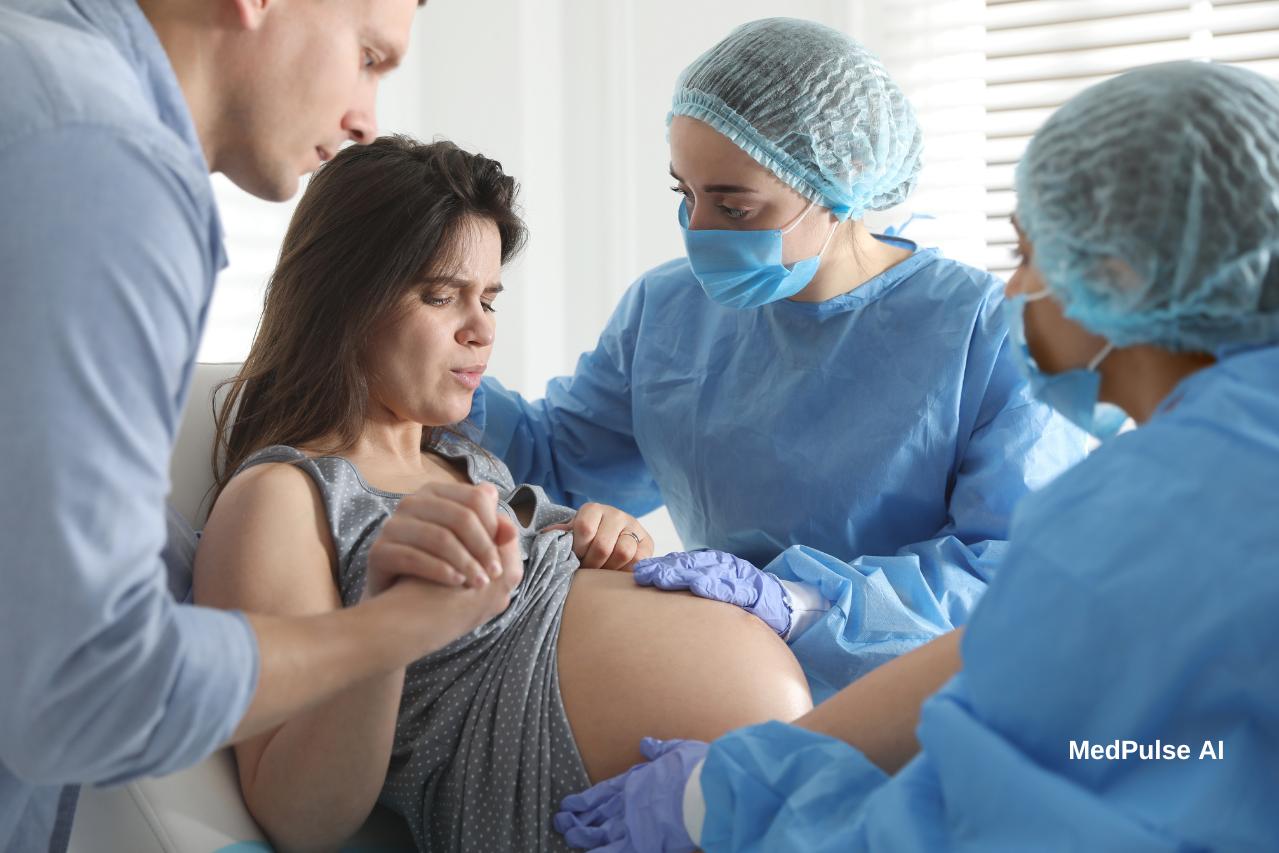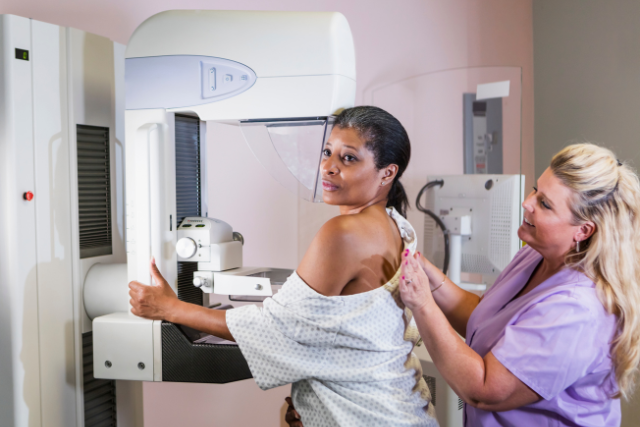Researchers at Loughborough University have developed an innovative artificial intelligence (AI) tool designed to enhance the safety of maternity care by identifying critical human factors that influence care outcomes. This tool analyzes maternity incident reports to pinpoint elements such as communication, teamwork, and decision-making that may impact the quality of care provided to mothers and babies.
Professor Georgina Cosma: “This tool bridges the gap between data and actionable insights, empowering healthcare professionals to address human factors that might otherwise be overlooked.”
Addressing Key Challenges in Maternity Safety
Maternity care is a complex field where clinical expertise, human factors, and system dynamics intersect. While healthcare providers have traditionally focused on clinical aspects like complications during pregnancy or delivery, the nuanced role of human behaviors, interactions, and organizational structures has often been harder to assess. This challenge has been compounded by the labor-intensive nature of manually reviewing incident reports to identify patterns and areas of improvement.
The AI tool developed at Loughborough automates this process, providing a standardized and efficient method to extract insights from maternity incident reports. These reports are generated when adverse events occur and are intended to highlight opportunities for learning and safety improvements. However, the sheer volume of data in such reports often makes it impractical to analyze them thoroughly. By leveraging machine learning, the AI system ensures that no key detail is overlooked.
A Breakthrough in Incident Analysis
The tool, developed by Professor Georgina Cosma, an AI expert, and Professor Patrick Waterson, a specialist in human factors, processes the content of maternity incident reports to identify recurring human factors. It has already been applied to 188 real-world reports from the National Health Service (NHS) in England, achieving remarkable success in pinpointing critical areas of concern.
Key findings from the AI’s analysis include:
- Teamwork and Communication Gaps: The tool highlighted that failures in collaboration and information sharing were among the most significant contributors to adverse outcomes. These gaps often led to delays in care, misinterpretations of patient conditions, or inconsistent follow-ups.
- Patient-Specific Factors: Characteristics such as a patient’s birth history, existing conditions like pre-eclampsia, or other risk factors were flagged as essential considerations in delivering personalized care.
- Technology and Training Deficiencies: The analysis revealed challenges related to medical equipment usage, such as lack of familiarity with devices or systems, underscoring the need for regular training and technology upgrades.
- Staffing and Decision-Making Pressures: Factors like understaffing, workload, and stress were shown to impact critical decision-making processes, sometimes leading to errors in judgment or oversight.
Advertisement

Transforming Maternity Care with Data-Driven Insights
This AI tool offers a paradigm shift in how maternity care systems approach safety improvements. By providing actionable insights, it allows healthcare organizations to implement targeted interventions, such as:
- Enhanced Training Programs: Based on the AI’s findings, institutions can design training to improve teamwork, communication, and decision-making skills.
- Streamlined Communication Protocols: Ensuring that information is clearly exchanged among healthcare teams can minimize errors and improve outcomes.
- Technology Integration and Education: Staff can receive regular updates and education on using medical devices, reducing the likelihood of technology-related errors.
- Resource Allocation: Insights into workload and staffing issues can help hospitals optimize resources and reduce burnout among healthcare workers.
Broader Impact on Global Maternity Care
Potential for Partnerships with International Health Organizations
Collaborations with global health organizations like the World Health Organization (WHO), United Nations Children’s Fund (UNICEF), and International Federation of Gynecology and Obstetrics (FIGO) could amplify the tool’s impact. These partnerships can:
- Facilitate Training and Implementation:
- WHO and UNICEF often lead capacity-building programs in low-resource settings. They could incorporate training on this AI tool into maternal health initiatives, empowering local healthcare workers to leverage its insights effectively.
- International NGOs could sponsor workshops or training sessions to teach healthcare providers how to interpret and act on the data generated by the tool.
- Provide Data Access and Standardization:
- Through partnerships, the tool could gain access to larger datasets from various countries. This would allow it to adapt to diverse healthcare environments and cultural contexts.
- WHO could support the creation of standardized global frameworks for analyzing human factors in maternity care, ensuring the AI’s outputs are universally applicable.
- Enable Funding and Resource Allocation:
- UNICEF and WHO can mobilize resources to fund the tool’s deployment in regions where maternal mortality rates are highest, such as sub-Saharan Africa and South Asia.
- Governments and donors could be encouraged to invest in deploying the tool as part of their broader maternal and child health strategies.
Supporting Global Maternity Care Initiatives
This AI tool aligns seamlessly with several ongoing global initiatives aimed at improving maternal health, including:
- Sustainable Development Goals (SDGs):
- The SDG 3.1 target focuses on reducing global maternal mortality to fewer than 70 deaths per 100,000 live births by 2030. By identifying systemic human factors that contribute to maternal mortality, the AI tool can directly support this goal.
- The tool’s ability to identify communication and teamwork challenges could improve the quality of care in rural clinics, where many maternal deaths occur due to delays and mismanagement.
- Global Maternal Health Partnerships:
- Programs like the Every Woman Every Child initiative and the Partnership for Maternal, Newborn, and Child Health (PMNCH) could integrate this AI tool into their efforts to ensure equitable access to quality maternity care.
- Improving Maternal Health in Low-Resource Settings:
- In areas where skilled professionals are scarce, the tool could guide healthcare workers by highlighting high-risk factors and systemic issues, ensuring that interventions are both targeted and efficient.
- For example, the AI could identify patterns such as staff shortages or lack of training in using medical equipment, prompting corrective actions even in clinics with limited resources.
Applications in Low-Resource Settings
Adapting this AI tool for low-resource settings would require tailoring it to the unique challenges of these regions:
- Data Localization:
- The AI tool would need to be trained on datasets relevant to specific countries or regions, incorporating local languages, cultural practices, and healthcare protocols.
- Simplified Technology Interfaces:
- For clinics with limited access to advanced technology, the tool could be integrated into basic mobile health (mHealth) platforms. Healthcare workers could access its insights through mobile apps or text-based systems.
- Offline Functionality:
- In areas with intermittent internet access, an offline version of the tool could be developed, allowing reports to be processed and stored locally until connectivity is available.
- Low-Cost Deployment:
- By leveraging cloud-based infrastructure and open-source platforms, the AI tool could be deployed cost-effectively, ensuring affordability for underfunded healthcare systems.
Advertisement

Impact on High Maternal Mortality Rates
The tool could dramatically improve maternal health outcomes by addressing key factors:
- Early Identification of Risks:
- By analyzing incident reports, the AI could identify recurring issues such as delayed referrals or inadequate monitoring, enabling targeted interventions to reduce complications like postpartum hemorrhage or obstructed labor.
- Enhancing Accountability:
- Its systematic analysis can reveal areas where care falls short, fostering accountability among healthcare providers and policymakers.
- Strengthening Local Healthcare Systems:
- The insights generated can guide investments in critical areas such as staff training, communication systems, and equipment upgrades, creating a ripple effect that strengthens overall healthcare delivery.
Case Study Potential
Consider how the tool could benefit regions with high maternal mortality rates:
- In Uganda, where maternal mortality stands at 336 deaths per 100,000 live births (2020), the tool could help identify and mitigate factors like delayed access to emergency care.
- In India, where rural healthcare workers face challenges with under-resourced clinics, the AI tool could highlight communication gaps and guide the allocation of scarce resources.
By collaborating with international health organizations and adapting to local needs, this AI tool could become a pivotal resource in global efforts to improve maternity care. It has the potential to not only reduce maternal mortality but also to create more equitable and effective healthcare systems worldwide, ensuring safer outcomes for mothers and babies, regardless of their location.
As the tool continues to evolve, its potential applications extend beyond maternity care to other areas of healthcare where human factors play a significant role, such as emergency care, surgery, and chronic disease management. By refining its algorithms and incorporating more data, researchers hope to create a versatile system capable of improving outcomes across diverse healthcare domains.
This innovation underscores the transformative role AI can play in healthcare by addressing not only clinical needs but also the often-overlooked human elements that significantly impact patient outcomes. By identifying and mitigating risks associated with human factors, this tool represents a monumental step forward in the quest to make maternity care safer and more effective for mothers and their babies.




